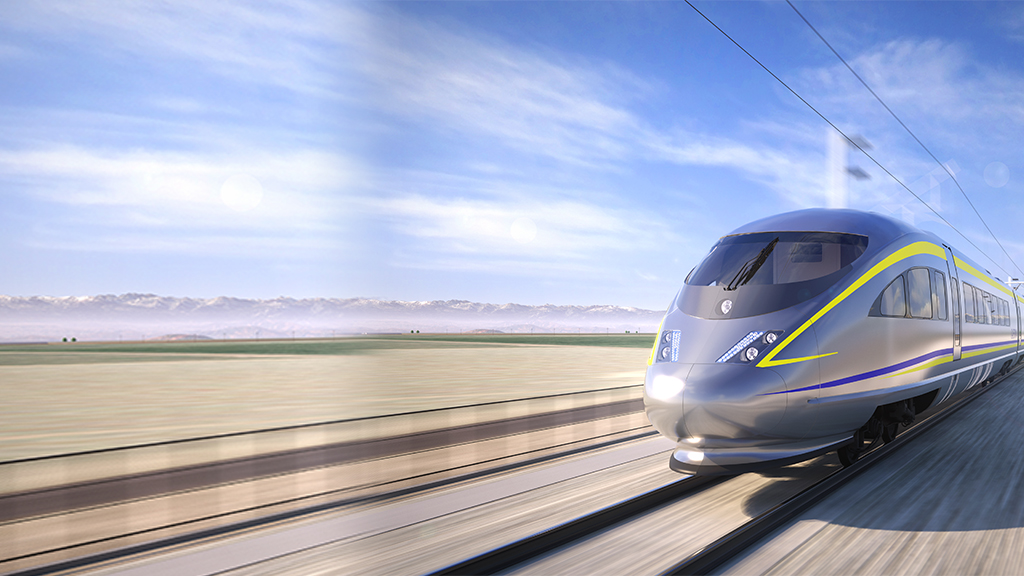Newsletter Sign Up
Stay updated on news, articles and information for the rail industry
Stay updated on news, articles and information for the rail industry
RAIL EMPLOYMENT & NOTICES
Rail News Home
Rail Industry Trends
Rail News: Rail Industry Trends
12/23/2002
Rail News: Rail Industry Trends
GETS unveils 'Evolution' series of environmentally friendly locomotives
advertisement
In 1996, GE Transportation Systems (GETS) began designing a locomotive that would meet U.S. Environmental Protection Agency-mandated emissions regulations for the rail industry — the so-called "Tier Two" requirements — by 2005.
On Dec. 23, GETS announced that it had met its goal two years ahead of schedule, unveiling what EPA Administrator Christine Whitman considers the "cleanest diesel fuel powered engine ever made."
Dubbed "the Evolution Series," the 4,400-horsepower, 12-cylinder diesel engine locomotives reduce emissions 40 percent from levels current locomotives produce, GETS said in a prepared statement. The units also feature a platform that can be upgraded to meet EPA regulations beyond 2005, and they burn less fuel than any other diesel electric locomotive, according to GETS, which so far has invested $200 million developing the Evolution series.
"Thousands of [Evolution] units will be in operation over the next decade," GETS President and Chief Executive Officer John Krenicki Jr. said during a press conference at the company’s Erie, Pa., headquarters. "They’ll have a tremendously positive impact on the environment — and on the wallets of our locomotive customers."
At the press conference, EPA Administrator Whitman congratulated GETS for the "good it has done and is doing for the future of rail transportation." By getting an early start, GETS "will have a substantial number of these units in service before 2005, and will set an example for others to follow," she said.
GETS initially plans to implement the Evolution technology in freight engines, but the technology eventually will be incorporated into passenger rail locomotives, Krenicki said.
On Dec. 23, GETS announced that it had met its goal two years ahead of schedule, unveiling what EPA Administrator Christine Whitman considers the "cleanest diesel fuel powered engine ever made."
Dubbed "the Evolution Series," the 4,400-horsepower, 12-cylinder diesel engine locomotives reduce emissions 40 percent from levels current locomotives produce, GETS said in a prepared statement. The units also feature a platform that can be upgraded to meet EPA regulations beyond 2005, and they burn less fuel than any other diesel electric locomotive, according to GETS, which so far has invested $200 million developing the Evolution series.
"Thousands of [Evolution] units will be in operation over the next decade," GETS President and Chief Executive Officer John Krenicki Jr. said during a press conference at the company’s Erie, Pa., headquarters. "They’ll have a tremendously positive impact on the environment — and on the wallets of our locomotive customers."
At the press conference, EPA Administrator Whitman congratulated GETS for the "good it has done and is doing for the future of rail transportation." By getting an early start, GETS "will have a substantial number of these units in service before 2005, and will set an example for others to follow," she said.
GETS initially plans to implement the Evolution technology in freight engines, but the technology eventually will be incorporated into passenger rail locomotives, Krenicki said.


 2025 MOW Spending Report: Passenger-rail programs
2025 MOW Spending Report: Passenger-rail programs
 Gardner steps down as Amtrak CEO
Gardner steps down as Amtrak CEO
 Guest comment: Oliver Wyman’s David Hunt
Guest comment: Oliver Wyman’s David Hunt
 Women of Influence in Rail eBook
Women of Influence in Rail eBook
 railPrime
railPrime







